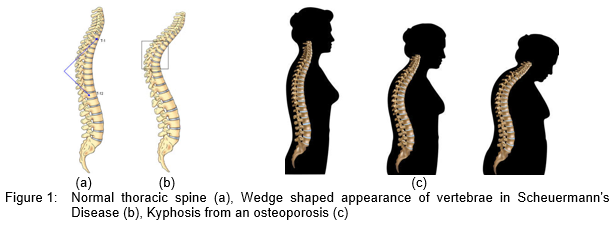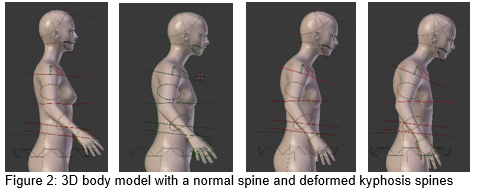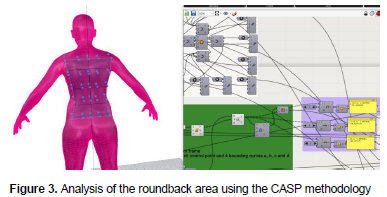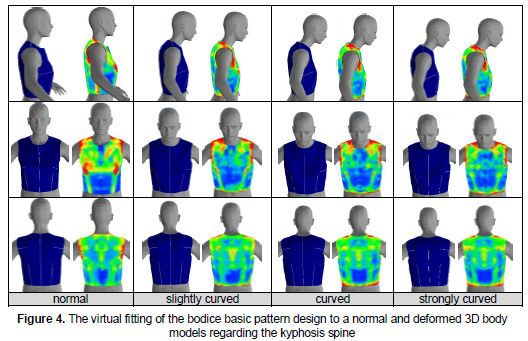Guide for new business and research ideas
The project ideas reflect the capacity of the five partner organizations to promote research results for new project proposals, while including the contact data of the project’s responsible.
6. Presentation of the 30 project ideas in template
6.24. NONSTANDARD BODY SHAPES’ GARMENT PATTERN DESIGN
|
Action |
Content |
|
Title of the project |
NONSTANDARD BODY SHAPES’ GARMENT PATTERN DESIGN |
|
Envisaged Program for funding / other sources for funding |
Bilateral or other research projects.
|
|
Domain of interest |
Nonstandard body shapes, Kyphosis, Garment Pattern Design, Virtual Prototyping, Computer Graphics |
|
Abstract (up to 500 words) |
On the market, it is difficult to find clothes for people with non-standard body shapes. Among these, there are also people with deformation of the spine who need well-designed and well-fitted garments. Deformations of the spine in early childhood and then at puberty can cause problems in the mature period, because in the early stages of development irregular spine curvatures can occur: scoliosis (on one and/or the other side S-shaped curved part or the whole spine), lordosis (exaggerated forward curvature of the spine in the lumbar region - belly is bulging and protruding forward) or kyphosis (excessive curvature of a larger or smaller part of the spine – rounding of the upper back, also called roundback, hunchback). The way we feel about our bodies can affect all aspects of our daily life. If we are wearing clothes that fit well and feel comfortable, this inevitably helps to boost our confidence. People with sustained spine deformation have problems with clothes that do not fit well in the back and front parts. They are tight across the back, too short in the back length and too long in the front length, open at the back of the neck, hemlines can become uneven etc.
We propose a research regarding the usefulness of CASP methodology for nonstandard body figures’ garment pattern design with the aim to ascertain whether the CASP methodology are adequate for predicting the appropriate garment pattern design for persons with a curved spine and for construction of well-fitted garments, respectively.
A synthetic 3D body model using Makehuman software (Makehuman 2015) was prepared, Figure 2. As it can be seen from the figure, the body with a normal spine and slightly curved, curved and strongly curved spines, found in the case of kyphosis, were prepared. In addition, the bodice basic pattern design was constructed according to normal (symmetric) synthetic female body by using rules of the construction system M. Müller&Sohn (System M. Müller & Sohn 1992) and Optitex CAD/PDS system (Optitex 2015). The virtual fitting of the basic bodice pattern design for the normal and deformed body models regarding the kyphosis spines was carried out. All 3D body models, presented in Figure 2, were analysed using the CASP methodology in the roundback area. It is clearly evident that CASP values, Table 1, especially Curvature – C and Acceleration – A, as well as increase in the back length and wide of the shoulder dart increases with an increase in the spine deformation. A high correlation between CASP values and back length and wide of the shoulder dart was found.
The bodice basic pattern design was constructed according to the normal (symmetric) synthetic female body The virtual fitting of the bodice basic pattern design was carried out to the normal and deformed body models regarding the kyphosis spines, Figure 4.
|
|
Keywords (up to 5) |
Virtual Prototyping, Computer Graphics, 3D Virtual Modelling, Complex textile structures |
|
Envisaged partners sought |
Research institutes, universities, companies producing technical textiles. |
|
Contact data (Name/Surname, Organization, email) |
Zoran Stjepanovič Institute of Engineering Materials and Design, Faculty of Mechanical Engineering, University of Maribor, Slovenia Email: zoran.stjepanovic@um.si |




